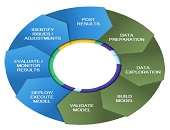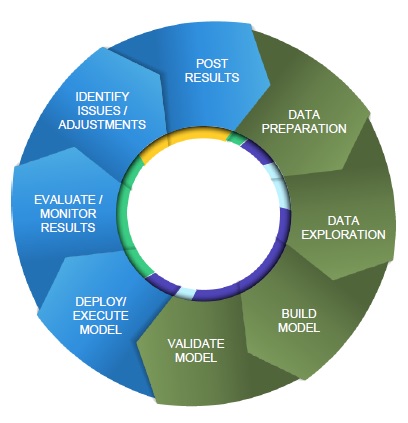What will be the ideal modelling platform of future bankers?
It will need to contain key functionalities in model execution, scenario management, and a “risk engine” that will deliver answers for multiple horizons at the loan level. Furthermore, it should implement the most advanced modelling suites, reduce the quants’ time to develop models, and contain simulation capabilities for stress testing and beyond.
This bold vision of the future was presented by Martim Rocha, Advisory Business Solution Manager at SAS. He was the second of two presenters at the February 25, 2016, webinar offered by the Global Association of Risk Professionals (GARP).
As anyone working at a financial institution knows, there is currently a strong “regulatory push.” Rocha listed five drivers for change and action in developing an integrated modelling platform:
- BCBS 239 (Basel Committee on Banking Supervision) on risk data aggregation and reporting
- Basel III Capital Requirements and Liquidity
- Recommendation A4 of ESRB/2012/2 Funding Plans (European Systemic Risk Board)
- IFRS 9 (International Financial Reporting Standard) and CECL (Current Expected Credit Loss)
- EBA (European Banking Authority), CCAR (Comprehensive Capital Analysis and Review), and APRA (Australian Prudential Regulatory Authority) regulatory stress testing
A bank requires a robust and easily managed platform that connects real data to financial models. Knowing the results of models can affect the bank’s position, such as the recent case of Australian banks’ stress tests not giving good outcome.
Challenges abound, Rocha pointed out. Data discrepancies must be resolved or reconciled. Cross reporting happens only at very aggregated levels, which can obscure important information. There are difficulties in accurately calculating risk-adjusted measures. Scenarios require special set-up and analysis. Last but not least, there is a lack of reliable, integrated historical information.
Rocha referred to a recent stress-testing survey that identified key areas of readiness for future changes in stress testing. (See: “Stress Testing: A View from the Trenches”) The white paper identified needed improvements in managing data, monitoring model and risk performance, implementation, and coordination.
The need for an integrated risk platform is best understood in terms of the analytical lifecycle. (See figure below.) Throughout the process, “you need to have a supportive environment,” Rocha said. “You must have the infrastructure in place.”
Enterprise Risk. A comprehensive architecture for enterprise risk, with a modular approach, will support the lifecycle well, he noted, and he proceeded to step through the details.
Data Management. A bank needs to have strong governance, and should have data management within the architecture. “Instead of having many independent processes collecting data, collect all the data at once in an integrated app,” Rocha said.
Model Development & Management. Consistency is a virtue. He suggested there should be a single process for model development, calibration, validation, and approval. “Teams of modellers might code in different languages, but you should manage all models under the same framework,” he said. Governance will keep track of who has approved the model, who has tested it, and so on.
Model Implementation. “More and more often, banks need answers quickly, whether it’s stress testing, or looking at the impact of business decisions,” Rocha said. To deliver answers in real-time, performance is key. The data and modelling system should deploy cutting-edge technology on model execution, resorting to in-memory grid parallel processing. 
Consolidation and Reporting. Once the data has been gathered and the models have been run, a bank needs to aggregate and consolidate results. Rocha noted this means, “One place for aggregation and consolidation of results including workflow to coordinate tasks and people interaction.”
All in all, he concluded, the best platform to combine data management with modelling is a platform that is integrated across the enterprise. The platform should have a comprehensive architecture with a modular approach. ª
Click here to view the webinar presentation “Modelling Platform for the ‘Future’ Analytical Banker.” Rocha’s slides are 8 to 22 inclusive.
Click here to view the first presentation of the webinar.
The analytical lifecycle picture is from Rocha’s presentation.


